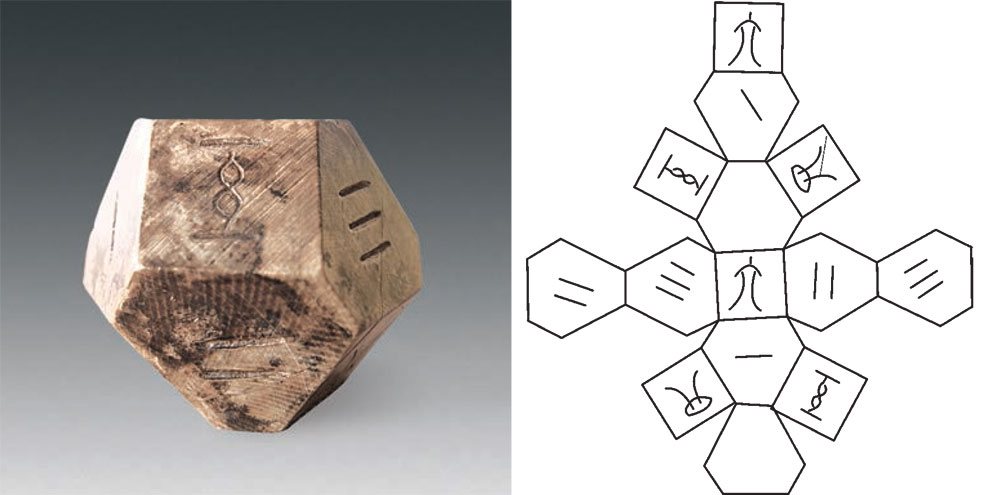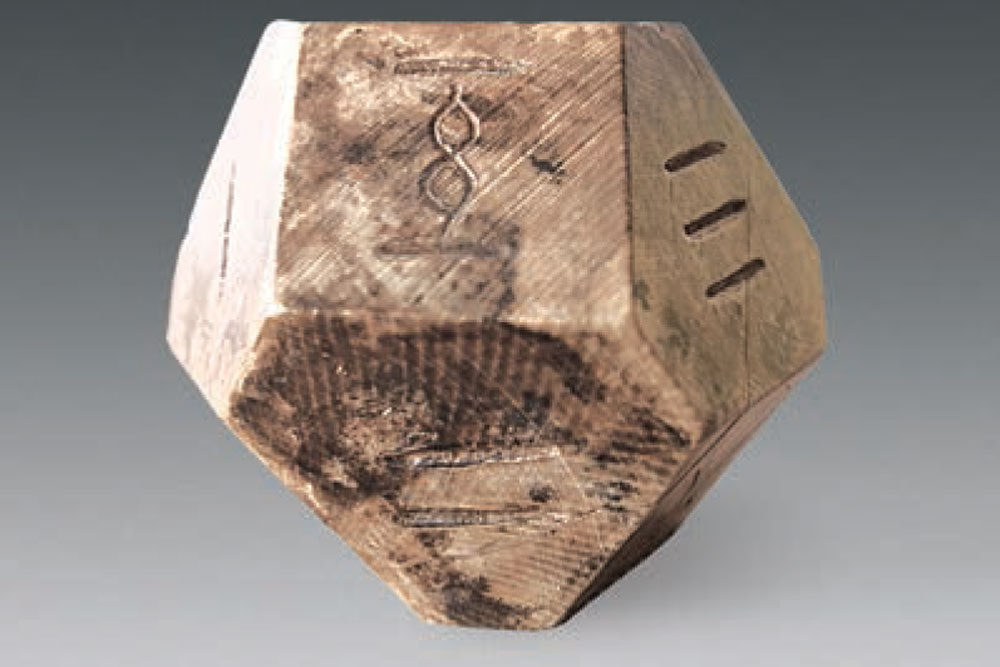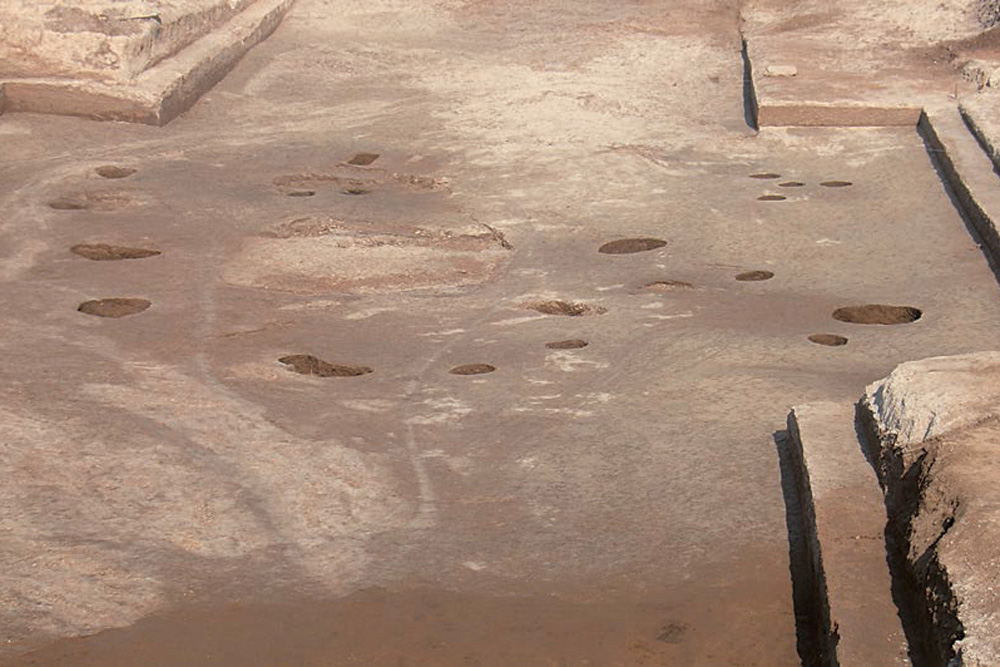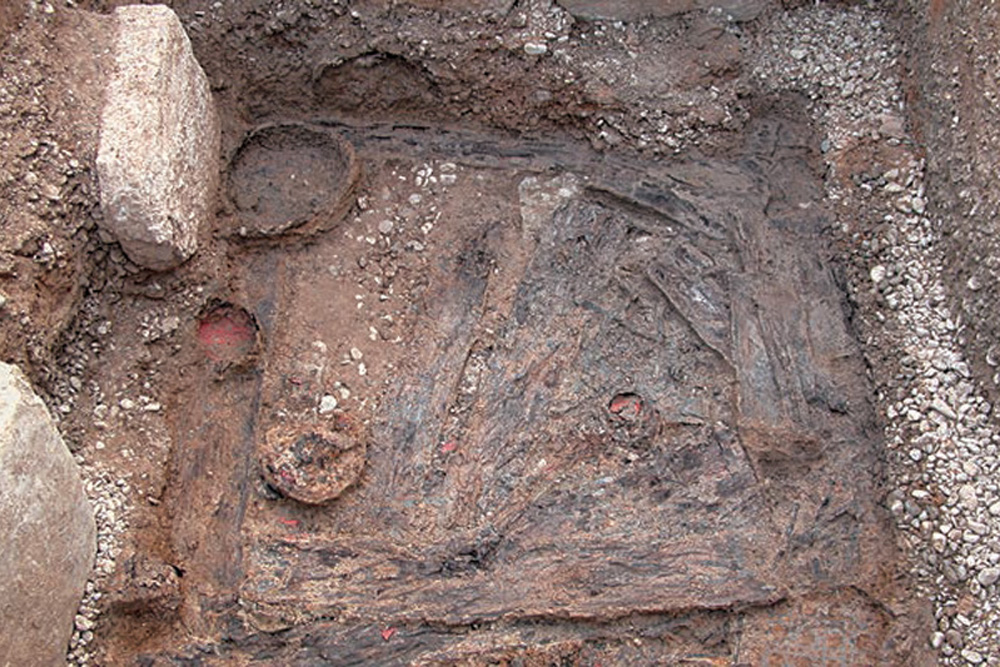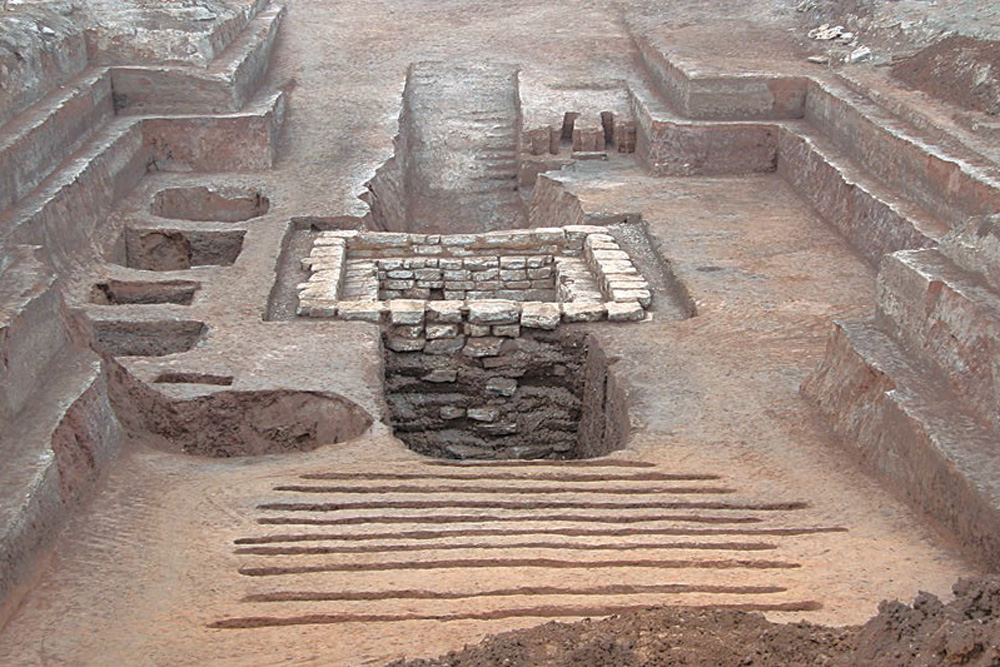Photos: Ancient Tomb and Board Game Found in China
Archaeologists have discovered the remains of an ancient board game, including a decorated dice and tiles, that hasn't been played for 1,500 years. Discovered in China, the mysterious game was found alongside a tomb. In a shaft within the tomb, the scientists discovered the remains of what may be one of the robbers who looted the tomb. [Read full story on the China tomb]
Using available materials
This dice, made out of animal tooth, was found in a tomb that dates back around 2,300 years. The tomb is near Qingzhou City in China. The tomb itself had been heavily robbed but this dice, along with game pieces and a broken game tile, were found in a pit containing grave goods.
The dice has 14 faces. Two of the faces are blank while the others contain the numbers 1 through 6, with each number shown twice on the dice. (Image courtesy Chinese Cultural Relics.)
Get in the game
Twenty-one game pieces were found near the dice. They have numbers painted on them. Two of the pieces are shown here. (Image courtesy Chinese Cultural Relics.)
Ancient gametime
Get the world’s most fascinating discoveries delivered straight to your inbox.
A reconstruction of the broken game tile that was found near the dice and game pieces. Archaeologists say that the tile is decorated with "two eyes, which are surrounded by cloud-and-thunder patterns." (Image courtesy Chinese Cultural Relics.)
Old fun
Archaeologists believe that the dice, game pieces and tile would have been used to play a game called "bo" (also known as "liubo"). The game stopped being played around 1,500 years ago and the rules are uncertain. A poem written around 2,200 years ago by a man named Song Yu gives some idea as to what happened.
"Then with bamboo dice and ivory pieces the game of Liu Bo is begun; Sides are taken; they advance together; keenly they threaten each other. Pieces are kinged and the scoring doubled. Shouts of 'five white!' arise." (Translation by David Hawkes) (Image courtesy Chinese Cultural Relics.)
A grand burial site
An image of the tomb facing west. The dice, game pieces and tile were found in a pit located beside the tomb. The occupant of the tomb is unknown. Archaeologists believe that it would have been built for the aristocracy of "Qi," an ancient state in China. This state was conquered by the first emperor of China, Qin Shi Huangdi, In 221 BC. (Image courtesy Chinese Cultural Relics.)
Evidence of desecration
Sadly the tomb had been heavily looted and many artifacts had been robbed. Archaeologists found 26 shafts dug by looters. This image shows a few of them. (Image courtesy Chinese Cultural Relics.)
Odds and ends
The pit where the dice, game pieces and tile were found along with other artifacts. (Image courtesy Chinese Cultural Relics.)
Sweeping view
A panoramic view of the tomb facing north. The tomb has two ramps that lead to a heavily robbed burial chamber. (Image courtesy Chinese Cultural Relics.)

Owen Jarus is a regular contributor to Live Science who writes about archaeology and humans' past. He has also written for The Independent (UK), The Canadian Press (CP) and The Associated Press (AP), among others. Owen has a bachelor of arts degree from the University of Toronto and a journalism degree from Ryerson University.


